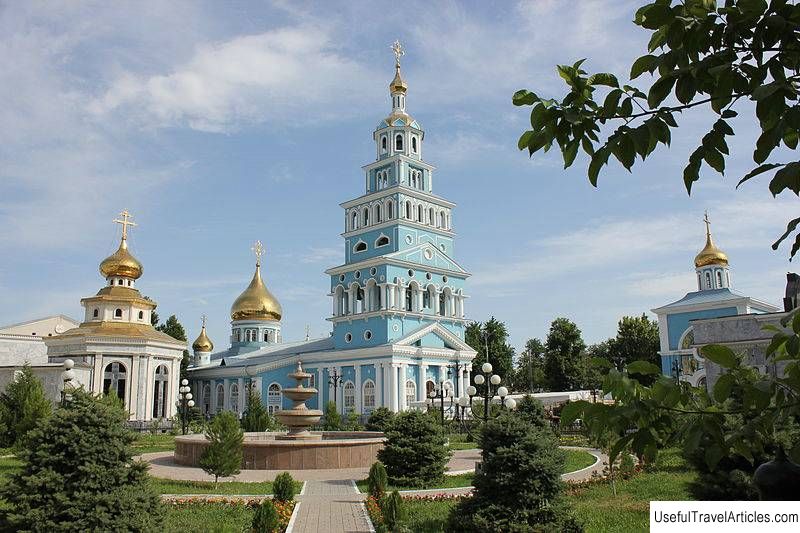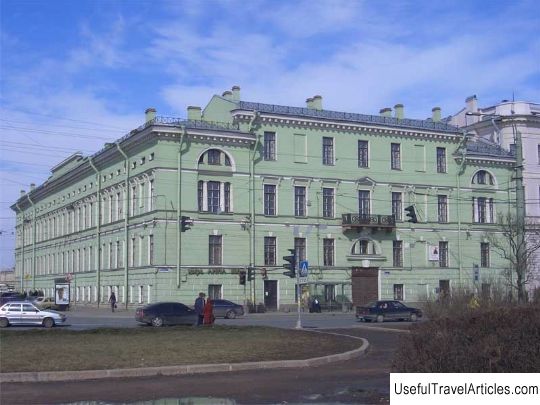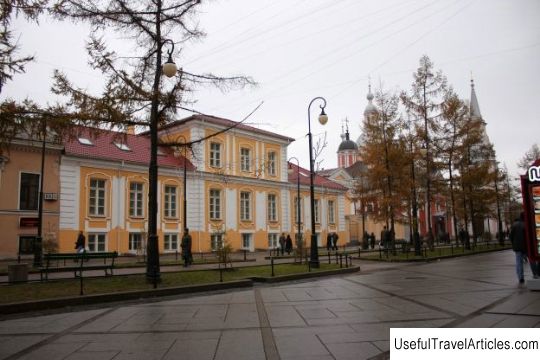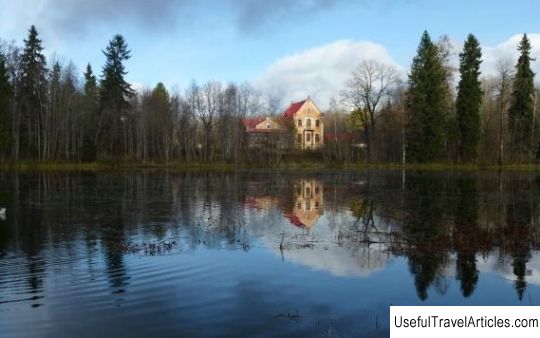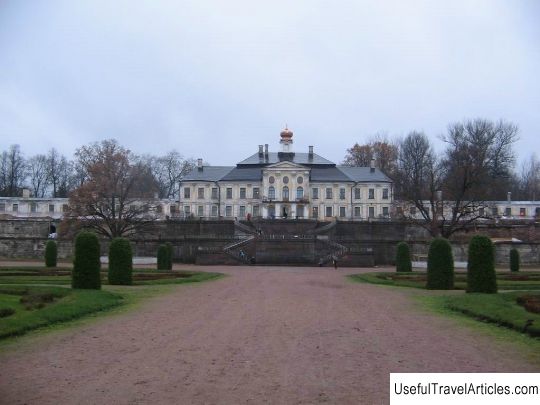House of Lavaley description and photo - Russia - Saint Petersburg: Saint Petersburg
Rating: 7,9/10 (1972 votes) 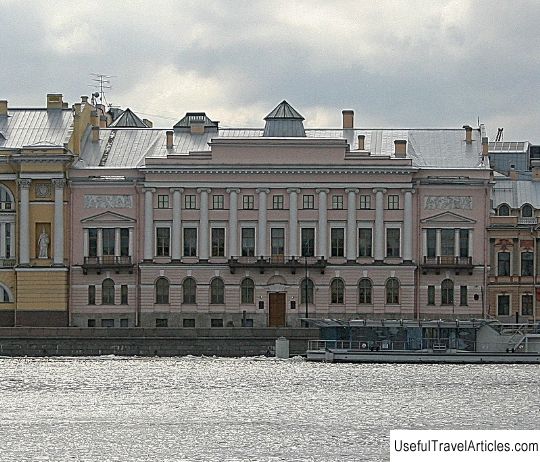
House of Lavaley description and photos - Russia - Saint Petersburg: Saint Petersburg. Detailed information about the attraction. Description, photos and a map showing the nearest significant objects. Photo and descriptionThe Lavaley House, located at 4, English Embankment, is one of the outstanding monuments of Russian architecture at the turn of the 18-19th centuries. The plot under this building, which extends to Krasnaya Street, as well as the adjacent plot belonged to A.D. Menshikov, the first governor of St. Petersburg. The stone house for Menshikov was built in the 20s of the 18th century. When Menshikov fell into disgrace, his house passed into the ownership of Vice-Chancellor Osterman A.I. When he fell into disgrace and was sent into exile, Elizaveta Petrovna presented this house to General V.F. Saltykov. At the end of the 18th century. the house was owned by A.N. Stroganov, and then his son, G.A. Stroganov. In the 90s. 18th century the building was radically rebuilt according to the project of A. N. Voronikhin At the beginning of the 19th century. the house was purchased by Countess A.G. Laval. By her order, the house was rebuilt by the architect Tom de Thomon, who redesigned the house both outside and inside. This is how he has survived to this day. The main facade of the building, overlooking the embankment, he decorated with a colonnade of ten three-quarter Ionic columns that unite the second and third floors. Stucco mythological panels are located above the three-part windows on the facade of the building. The house is crowned with a stepped attic, not a traditional pediment. The well-defined proportions of the horizontal division of the building facade, the calm rhythm of the colonnade, which ends with a stepped attic, give the house a ceremonial and solemn look. Of interest is the interior design of the Laval house, which has been partially preserved from 1810-1820. In many rooms, grisaille (painting for modeling) has survived. The decoration of the Blue Hall is of artistic value, which was designed by the architect G.A. Bosse. in the 1840s. The lobby and the main staircase are the most successful. The lobby of Laval's house is decorated with powerful Doric columns and pilasters without bases. The premises of the main staircase are decorated more elegantly and richly. It is made in the form of a rotunda covered with a dome with caissons decorated with stucco rosettes and stars. The Great Hall was designed by N. Charpentier. It is covered by a mirrored vault with polychrome painting, which is supported by columns. The painting was done by the artists Bezsonov and V. Medici. Since the 10s. 19th century the Lavaley house was the center of the cultural life of St. Petersburg. The exhibition hall of the house housed a collection of antique sculpture, the largest in all of Russia. The painting room housed a collection of Renaissance art. A separate room was set aside for a large library, the collection of which, in addition to books, included prints and geographical maps. Musical and literary evenings were held in the literary salon of the Countess Laval, where they invited poets, musicians, writers, and artists famous in the capital. Here Karamzin and Pushkin read their works. Among the guests of this house were Alexander Griboyedov, Ivan Krylov, Nikolai Gnedich, Vasily Zhukovsky, Adam Mitskevich, Pyotr Vyazemsky. Before the uprising of 1825, the Decembrists gathered in these walls. Receptions, literary evenings, balls, openings, concerts continued as long as the Laval couple were alive. In 1846 Ivan Stepanovich died, and in 1850 his wife, Alexandra Grigorievna, also died. The house was owned by their middle daughter Sophia, who married Count A.M. Borja. The spouses could not afford to maintain such a mansion. Therefore, in 1872. the mansion was sold to the famous millionaire and banker Samuil Polyakov, who acquired his capital on the construction of railways. In 1911. the house was acquired from his heirs by the treasury to house the documents of the Senate. After the revolution, this building housed the Central State Historical Archive, which was created in 1925 and included the archives of the Synod and the Senate, funds of other higher institutions states of the pre-revolutionary period. Soviet documents were collected in other archives. During the Great Patriotic War, Laval's house suffered significant damage and was subsequently restored more than once. The building acquired its modern look thanks to the reconstruction, which lasted about two years. The moldings, fireplaces, painting, parquet, metal decor, gilding. The interior was equipped with modern means of communication and the necessary communications so that the Constitutional Court of the Russian Federation could begin its work here.          Topic: House of Lavaley description and photo - Russia - Saint Petersburg: Saint Petersburg. |
